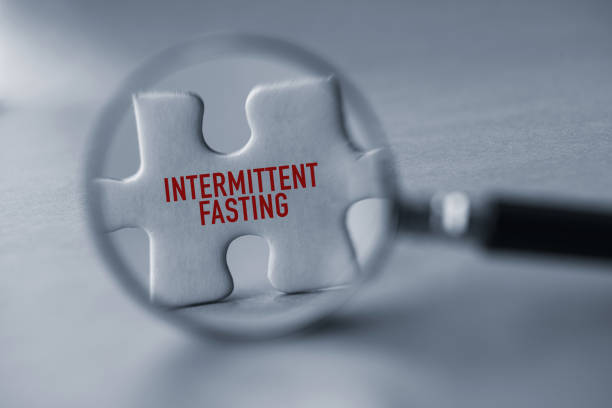Table of Contents
ToggleThe idea of intermittent fasting has been around for centuries, but it’s only recently that it’s become popular. Intermittent fasting is an eating schedule that alternates between fasting and eating. It doesn’t change what you eat, it changes when you eat. There are several different ways but the most popular method involves daily 16-hour fasts.
What is Intermittent Fasting?
Intermittent fasting is a dietary practice that involves alternating periods of fasting and eating. It has gained significant popularity in recent years due to its potential health benefits. During intermittent fasting, individuals intentionally restrict their calorie intake for specific time intervals. This eating pattern has been followed by various cultures and religions throughout history, with roots in ancient practices.
History and Origins of Intermittent Fasting
The history and origins of intermittent fasting can be traced back to religious rituals, such as fasting during Ramadan in Islam and Yom Kippur in Judaism, as well as practices in ancient Greece and Rome. These cultures recognized the potential physical and spiritual benefits of fasting and incorporated it into their traditions.
Benefits of Intermittent Fasting
Intermittent fasting offers numerous benefits for both physical and mental well-being. By restricting eating to specific time windows, it promotes weight loss and improves metabolic health by enhancing insulin sensitivity and reducing inflammation. It also supports autophagy, the cellular repair process that removes damaged cells and promotes longevity.
Intermittent fasting has been linked to increased brain function and neuroprotection, as well as a reduced risk of chronic diseases such as diabetes, heart disease, and cancer.
A. Weight Loss and Body Composition
-
How Intermittent Fasting Promotes Weight Loss
Intermittent fasting promotes weight loss by creating a calorie deficit through a restricted eating window. This approach helps individuals consume fewer calories over time, leading to gradual weight loss.
-
Effects on Metabolism and Fat Burning
Intermittent fasting positively affects metabolism and fat burning. During fasting periods, the body switches to burning stored fat for energy, resulting in increased fat oxidation and improved metabolic flexibility.
B. Improved Insulin Sensitivity and Blood Sugar Control
Intermittent fasting improves insulin sensitivity and blood sugar control. Regular fasting periods regulate insulin levels and enhance the body’s response to insulin, reducing the risk of insulin resistance and type 2 diabetes.
C. Enhanced Brain Function and Mental Clarity
Intermittent fasting has been linked to enhanced brain function and mental clarity. Fasting triggers a cellular process called autophagy, which removes damaged cells and stimulates the growth of new neurons, leading to improved cognitive function and increased mental alertness.
D. Potential Anti-Aging Effects
Intermittent fasting may have potential anti-aging effects. It activates cellular repair mechanisms and protects against age-related diseases, potentially extending lifespan.
E. Other Health Benefits
- Reduced Inflammation
Intermittent fasting reduces inflammation in the body, which can decrease the risk of conditions like heart disease, cancer, and Alzheimer’s disease.
- Lowered Risk of Chronic Diseases
Intermittent fasting has been associated with a lowered risk of chronic diseases. By promoting overall health and well-being, it may contribute to a decreased risk of various ailments.
Different Approaches to Intermittent Fasting
16/8 Method: Leangains Protocol
The 16/8 Method, also known as the Leangains Protocol, is a popular approach to intermittent fasting. It involves fasting for 16 hours and restricting eating to an 8-hour window each day. This method helps regulate insulin levels and promotes fat loss while preserving muscle mass.
5:2 Diet
The 5:2 Diet is another approach to intermittent fasting. Individuals eat normally for five days of the week and restrict their calorie intake to 500-600 calories for two non-consecutive days. This method aids in calorie reduction and can result in weight loss.
Eat-Stop-Eat
Eat-Stop-Eat is a fasting method that involves fasting for a full 24 hours once or twice a week. This approach promotes calorie reduction and potentially enhances cellular repair mechanisms.
Alternate-Day Fasting
Alternate-Day Fasting is a more intense fasting regimen where individuals fast every other day. This method can lead to significant calorie reduction and weight loss.
Warrior Diet
The Warrior Diet mimics the eating patterns of ancient warriors. It involves fasting for 20 hours and consuming one large meal during the remaining 4-hour eating window. This approach combines periods of fasting with a single, substantial meal.
Spontaneous Meal Skipping
Spontaneous Meal Skipping allows individuals to skip meals as they see fit, providing flexibility while still incorporating intermittent fasting principles. This approach offers the freedom to adapt fasting periods based on personal preferences and lifestyle.
Getting Started with Intermittent Fasting
Assessing Your Readiness
Before diving into intermittent fasting, it’s essential to assess your readiness. Evaluating your current lifestyle and considering your overall health and well-being will help you determine if intermittent fasting is a suitable approach for you.
Setting Clear Goals
To embark on your intermittent fasting journey, it’s crucial to set clear goals. Identify specific objectives such as weight loss, increased energy levels, or improved digestion. Having well-defined goals will keep you focused and motivated throughout the process.
Choosing the Right Fasting Schedule
Selecting the appropriate fasting schedule is vital for a successful experience with intermittent fasting. Consider your work schedule, social commitments, and personal preferences when choosing a fasting method. Popular options include the 16/8 method or the 5:2 diet. Find the schedule that aligns best with your lifestyle.
Tips for a Smooth Transition
- Gradual Adjustment of Meal Timing
To ease into intermittent fasting, gradually adjust your meal timing. Start by pushing breakfast later or skipping it altogether. This gradual shift will help your body adapt more easily to the new eating pattern.
- Staying Hydrated During Fasting
During fasting periods, it’s important to stay hydrated. Drink plenty of water or herbal teas to curb hunger and keep yourself refreshed.
- Balancing Nutrient Intake
Maintaining a balanced nutrient intake is crucial when following intermittent fasting. Include a variety of whole foods such as fruits, vegetables, lean proteins, and healthy fats during your eating windows.
Common Challenges and How to Overcome Them
Intermittent fasting may present challenges along the way. Here are some common obstacles and strategies to overcome them:
- Hunger Pangs and Cravings
Plan your meals ahead and focus on nutrient-dense foods to help manage hunger pangs and cravings. Practice mindful eating to savor your meals and stay satisfied.
- Social Pressures
Communicate your fasting goals with friends and family to gain their support. Seek out communities or online groups of individuals following similar fasting routines for additional encouragement.
What to Eat and Drink During Intermittent Fasting
Including the Right Foods
To make the most of intermittent fasting, it’s crucial to include the right foods during your eating window. Lean proteins such as chicken, fish, and tofu should be on your plate, along with a variety of vegetables, fruits, whole grains, and healthy fats like avocados and nuts. These nutrient-dense choices will provide you with essential vitamins, minerals, and fiber, ensuring you feel satisfied and nourished.
Foods to Avoid
While practicing intermittent fasting, it’s important to steer clear of processed foods, sugary snacks, and refined carbohydrates. These items can cause rapid spikes in blood sugar levels, leading to cravings and energy crashes. By avoiding them, you’ll maintain a more stable energy level throughout the fasting period.
Hydration and Non-Caloric Beverages
Staying hydrated is crucial during intermittent fasting. Water should be your go-to choice, as it has no calories and helps curb hunger. Herbal teas and black coffee, without sugar or cream, are also acceptable during the fasting window. These beverages can provide flavor and help you stay on track without breaking your fast.
Supplements to Support Intermittent Fasting
Supplements can play a supportive role in intermittent fasting by providing essential nutrients and promoting overall health. Consider incorporating a high-quality multivitamin to bridge any nutrient gaps in your diet. Omega-3 fatty acid supplements can also support brain health and reduce inflammation. However, it’s always wise to consult with a healthcare professional before starting any new supplements.
I strongly encourage you to explore the range of supplements available at Health Fitness Longevity’s online store. Health Fitness Longevity offers a wide selection of carefully curated products that support your overall health and well-being. You will find a variety of supplements designed to boost your immune system, provide essential vitamins and minerals, support cognitive function, and offer natural remedies for specific health concerns. Health Fitness Longevity takes pride in providing high-quality products backed by scientific research and manufactured with meticulous care.
Exercise and Intermittent Fasting
Best Types of Exercise During Fasting
When engaging in intermittent fasting, certain types of exercise are particularly beneficial. High-intensity interval training (HIIT) is one of the best options as it helps burn calories and fat efficiently while preserving muscle mass. Additionally, strength training exercises, such as weightlifting or bodyweight workouts, can promote muscle growth and enhance overall metabolism. These exercises not only contribute to weight loss but also improve cardiovascular health and build strength.
Optimal Timing for Exercise
The optimal timing for exercise during intermittent fasting largely depends on personal preferences and energy levels. Some individuals prefer to exercise in the morning before breaking their fast, as it can increase fat burning and provide an energy boost for the day. Others may choose to exercise during the eating window to replenish energy stores and enhance performance. Experimenting with different timings and listening to your body’s signals can help determine the most suitable exercise time during intermittent fasting.
Pre- and Post-Workout Nutrition
Pre- and post-workout nutrition is crucial to support exercise performance and recovery. Before a workout, it’s recommended to consume a small, balanced meal that includes a combination of protein, carbohydrates, and healthy fats. This provides the necessary fuel to sustain energy levels during the exercise session. After a workout, it’s important to replenish the body with nutrients to aid muscle repair and recovery. Consuming a meal or snack that combines protein and carbohydrates within the post-workout window can optimize the body’s ability to rebuild and replenish energy stores.

Safety and Precautions of Intermittent Fasting
Who Should Avoid Intermittent Fasting?
Certain medical conditions or specific dietary needs may warrant avoiding intermittent fasting as a weight management approach. Conditions such as diabetes, eating disorders, or a history of disordered eating require alternative strategies. Pregnant or breastfeeding women should also refrain from intermittent fasting due to increased nutritional demands.
Potential Side Effects and How to Manage Them
Intermittent fasting can lead to side effects such as hunger, fatigue, irritability, and difficulty concentrating. To manage these, it is essential to stay hydrated, consume nutrient-dense meals during eating windows, and ensure adequate sleep and rest. Prioritizing a balanced diet and making healthy food choices is crucial to meet nutritional needs.
Consultation with Healthcare Professionals
Before initiating an intermittent fasting regimen, it is advisable to consult healthcare professionals. They can offer guidance, assess the suitability of intermittent fasting based on an individual’s medical history and goals, and provide personalized recommendations. This consultation is particularly important for those with pre-existing medical conditions, taking medications, or undergoing specific treatments. Healthcare professionals can help tailor an intermittent fasting plan to ensure safety and efficacy.
Tracking Progress and Monitoring Health
Tools for Tracking Fasting and Eating Windows
Tracking fasting and eating windows is made easier with a range of effective tools. These tools, such as mobile applications and smart devices, provide real-time updates and reminders to help individuals adhere to designated timeframes for fasting and eating. By utilizing these tools, individuals can actively monitor and manage their dietary habits, ensuring a structured approach to their eating patterns.
Assessing Body Composition and Health Markers
To track progress and monitor health effectively, it is important to assess body composition and key health markers regularly. Bioelectrical impedance devices and wearable health trackers are advanced technologies that enable individuals to conveniently measure and track indicators like body weight, body fat percentage, and blood pressure. By utilizing these tools, individuals can gain valuable insights into their current health status and track changes over time, allowing for informed decisions regarding nutrition, exercise, and overall lifestyle choices.
Recognizing Personal Results and Adjustments
Recognizing personal results and making appropriate adjustments is a crucial aspect of the tracking process. By actively monitoring progress and analyzing collected data, individuals can identify which strategies and habits are yielding positive outcomes. This enables them to make personalized adjustments to their dietary and exercise routines, optimizing results based on individual needs and preferences. Regular review and analysis of data empower individuals to make informed decisions and tailor their wellness journey to achieve their desired outcomes.














